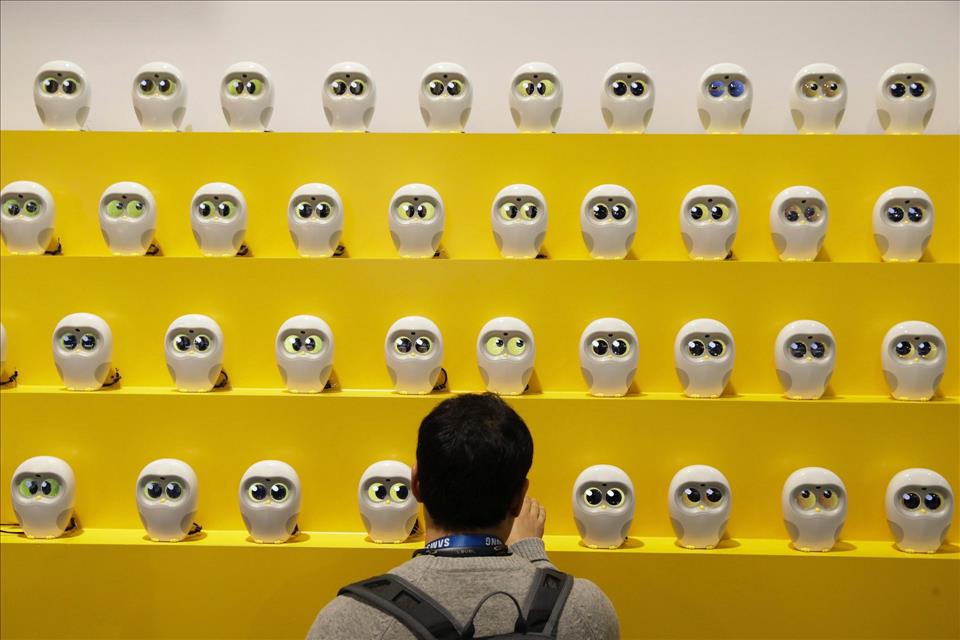When Robots Are Integrated Into Household Spaces And Rituals, They Acquire Emotional Value
In our recent study of families in Canada and the United States, we found that even after a children's reading robot“retired” or was no longer in active and regular use, most households chose to keep it - treating it less like a gadget and more like a member of the family.
Luka is a small, owl-shaped reading robot , designed to scan and read picture books aloud, making storytime more engaging for young children.
In 2021, my colleague Rhonda McEwen and I set out to explore how 20 families used Luka. We wanted to study not just how families used Luka initially, but how that relationship was built and maintained over time, and what Luka came to mean in the household. Our earlier work laid the foundation for this by showing how families used Luka in daily life and how the bond grew over the first months of use .
When we returned in 2025 to follow up with 19 of those families, we were surprised by what we found. Eighteen households had chosen to keep Luka, even though its reading function was no longer useful to their now-older children. The robot lingered not because it worked better than before, but because it had become meaningful .
LingTech Inc. presents the features of its reading robot, Luka. A deep, emotional connection
Children often spoke about Luka in affectionate, human-like terms. One called it“my little brother .” Another described it as their“only pet.” These weren't just throwaway remarks - they reflected the deep emotional place the robot had taken in their everyday lives.
Because Luka had been present during important family rituals like bedtime reading, children remembered it as a companion.
Parents shared similar feelings. Several explained that Luka felt like“part of our history.” For them, the robot had become a symbol of their children's early years, something they could not imagine discarding. One family even held a small“retirement ceremony” before passing Luka on to a younger cousin, acknowledging its role in their household.
Other families found new, practical uses. Luka was repurposed as a music player, a night light or a display item on a bookshelf next to other keepsakes. Parents admitted they continued to charge it because it felt like“taking care of” the robot.
The device had long outlived its original purpose, yet families found ways to integrate it into daily routines.
'Domesticating' technologiesDomestication describes how technologies can become embedded in everyday routines and meanings. (Mohamed Nohassi/Unsplash+)
The way participants treated Luka challenges how we usually think about technology, which is that gadgets are disposable . A new phone replaces an old one, toys break and get thrown away and laptops end up in e-waste bins. But when technologies enter family life, especially around emotionally significant moments like storytime, they can become part of the household in lasting ways.
Our research findings also have important implications for design. Should robots come with an end-of-life plan that recognizes their emotional value? Should companies design with the expectation that some products will be cherished and repurposed, not just discarded and replaced?
There are environmental dimensions, too. If families hold on to robots because of attachment, fewer may end up in landfills; this complicates how we think about sustainability and recycling when devices are treated more like keepsakes than tools that may outlive their usefulness.
Scholars who study human-computer interaction often use the term“domestication” to describe how technologies become embedded in everyday routines and meanings.
More than machinesOur study extends that idea to what happens when technology retires. Luka was no longer useful in the conventional sense, but families still made space for it emotionally, symbolically and practically.
Many of us keep objects for sentimental reasons, long after they have served their original purpose. Luka shows us that robots can become more than machines.
Technology is often framed as fast-moving and disposable. But sometimes, as these families revealed, it lingers. A retired robot can stay in the household because it matters.

Legal Disclaimer:
MENAFN provides the
information “as is” without warranty of any kind. We do not accept
any responsibility or liability for the accuracy, content, images,
videos, licenses, completeness, legality, or reliability of the information
contained in this article. If you have any complaints or copyright
issues related to this article, kindly contact the provider above.
Most popular stories
Market Research

- Japan Buy Now Pay Later Market Size To Surpass USD 145.5 Billion By 2033 CAGR Of 22.23%
- BTCC Summer Festival 2025 Unites Japan's Web3 Community
- GCL Subsidiary, 2Game Digital, Partners With Kucoin Pay To Accept Secure Crypto Payments In Real Time
- Smart Indoor Gardens Market Growth: Size, Trends, And Forecast 20252033
- Nutritional Bar Market Size To Expand At A CAGR Of 3.5% During 2025-2033
- Pluscapital Advisor Empowers Traders To Master Global Markets Around The Clock






















Comments
No comment